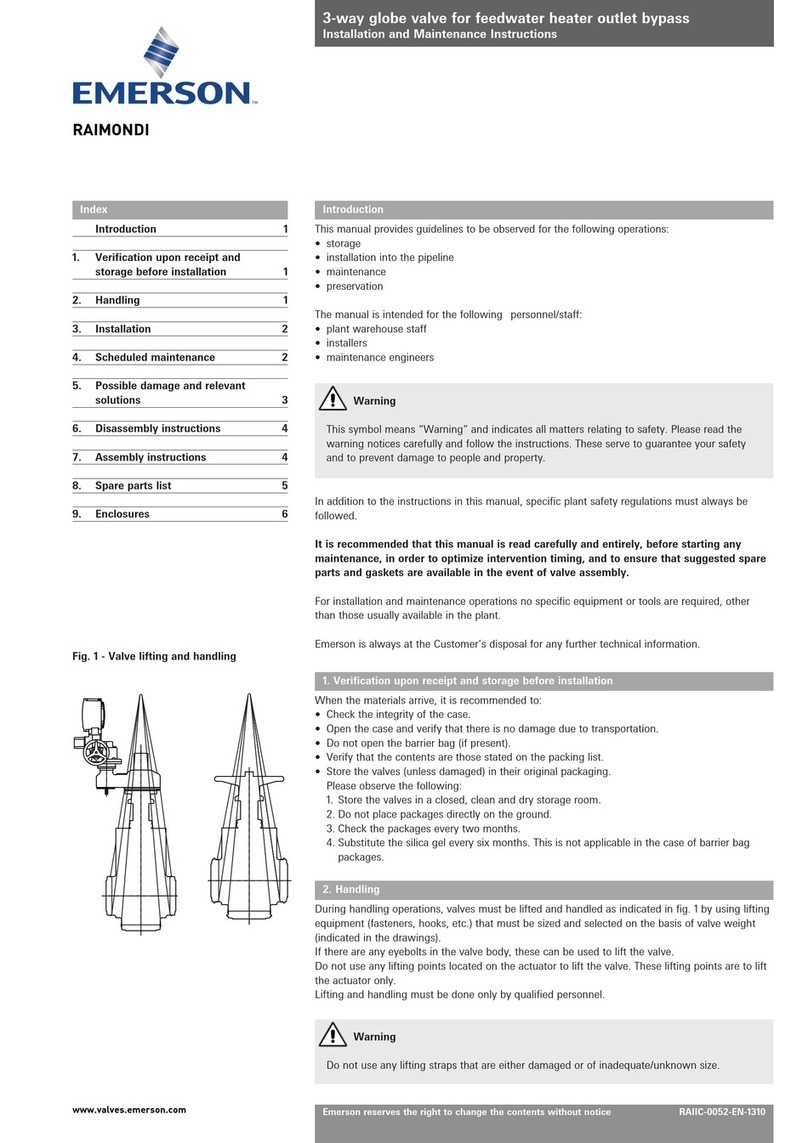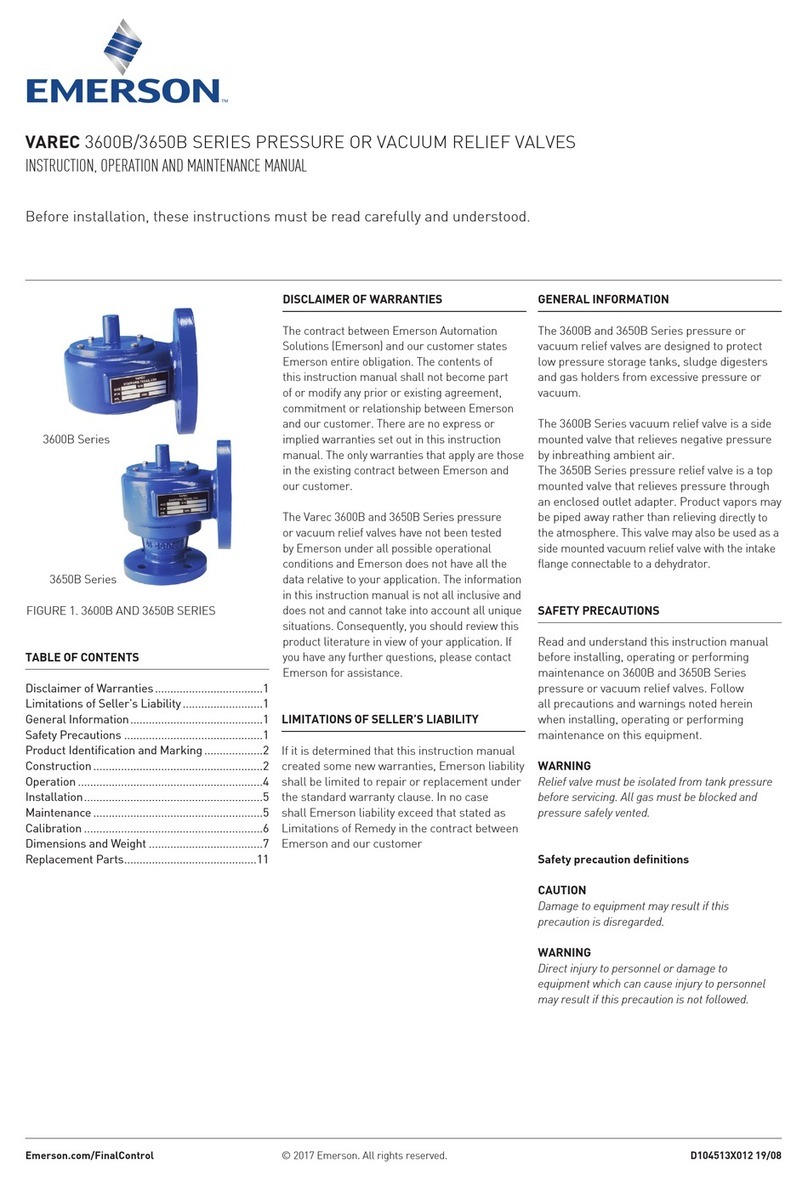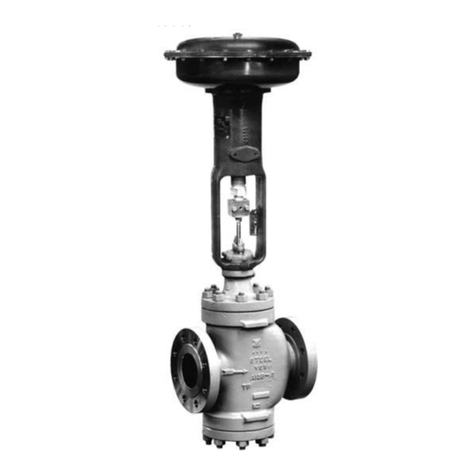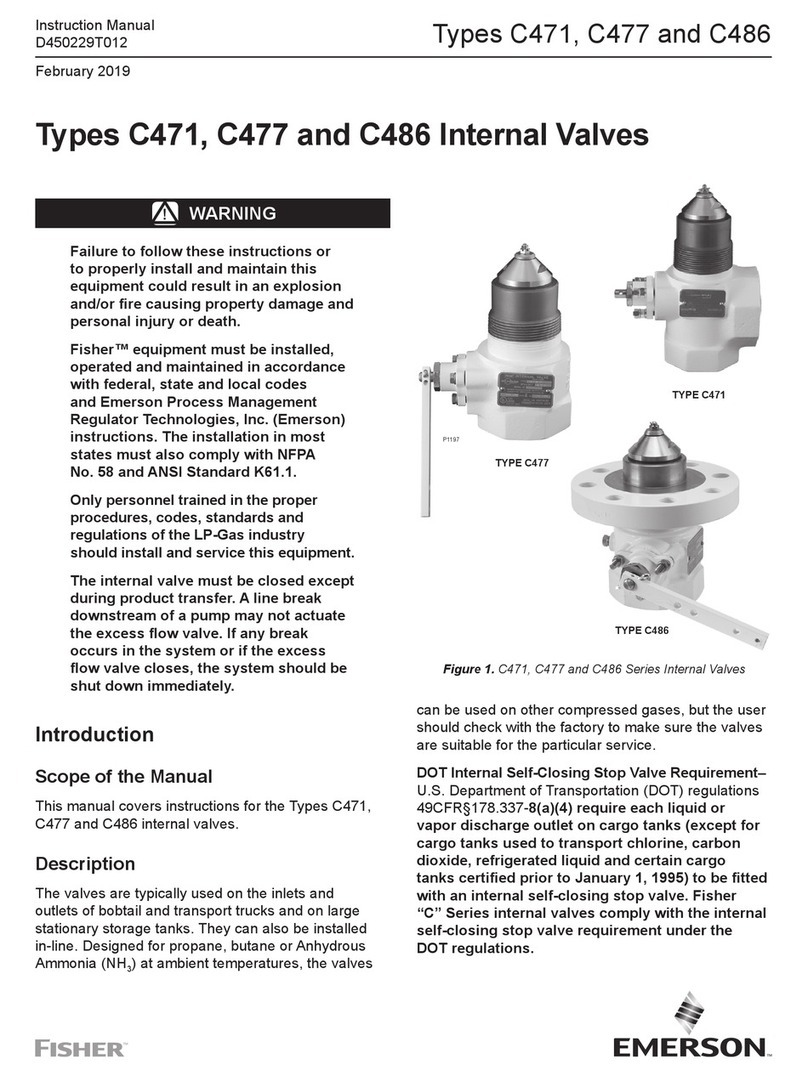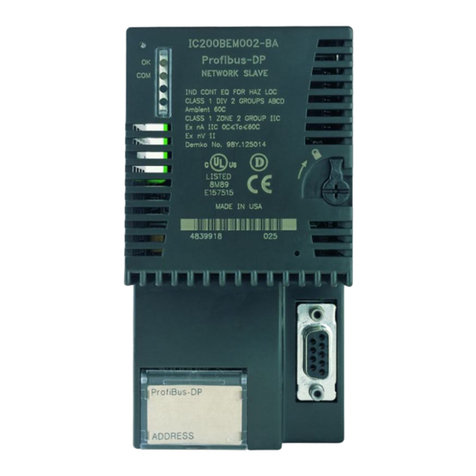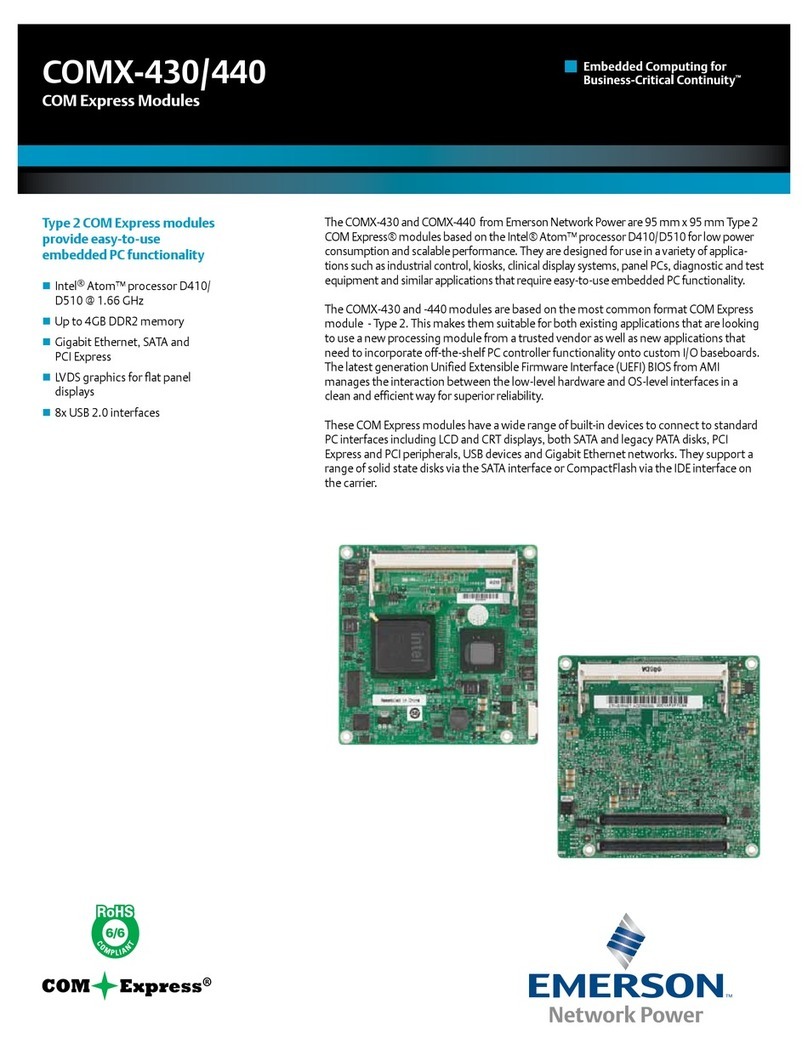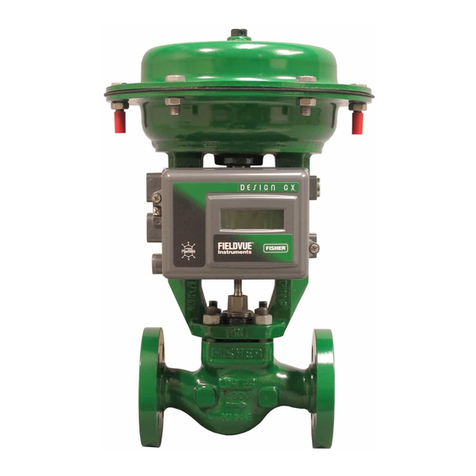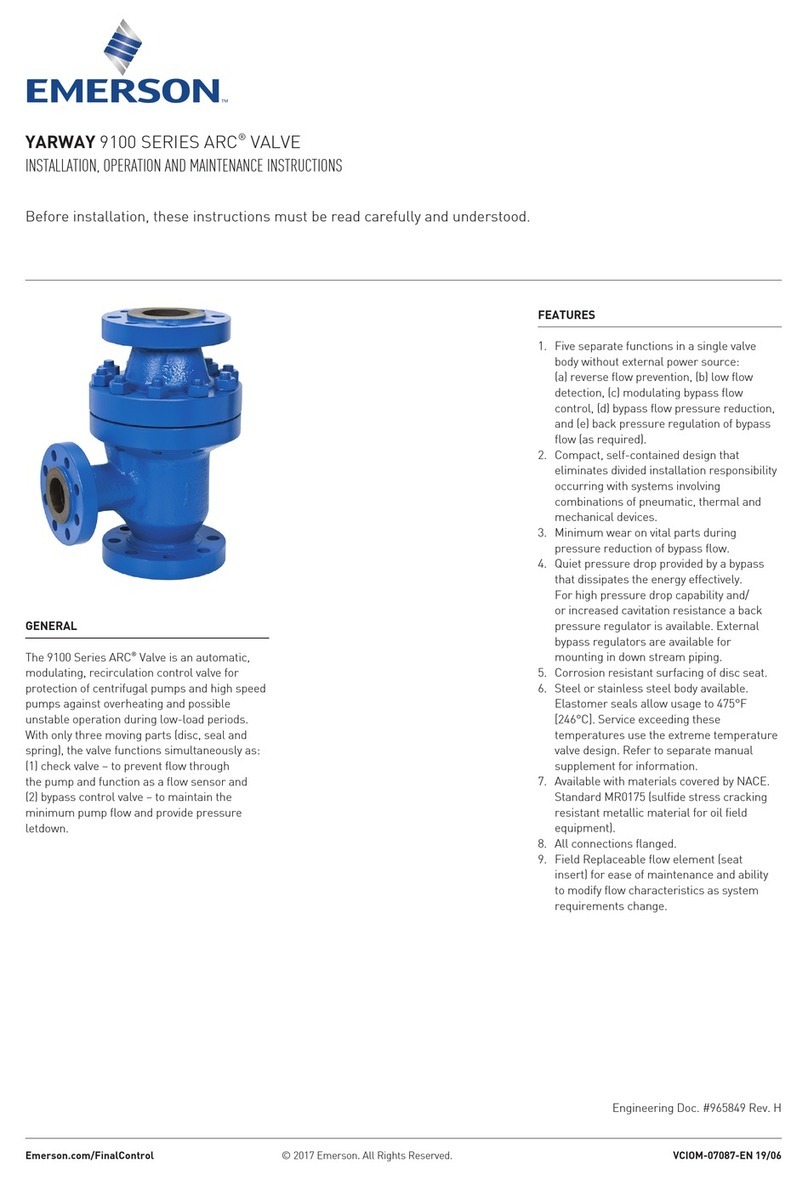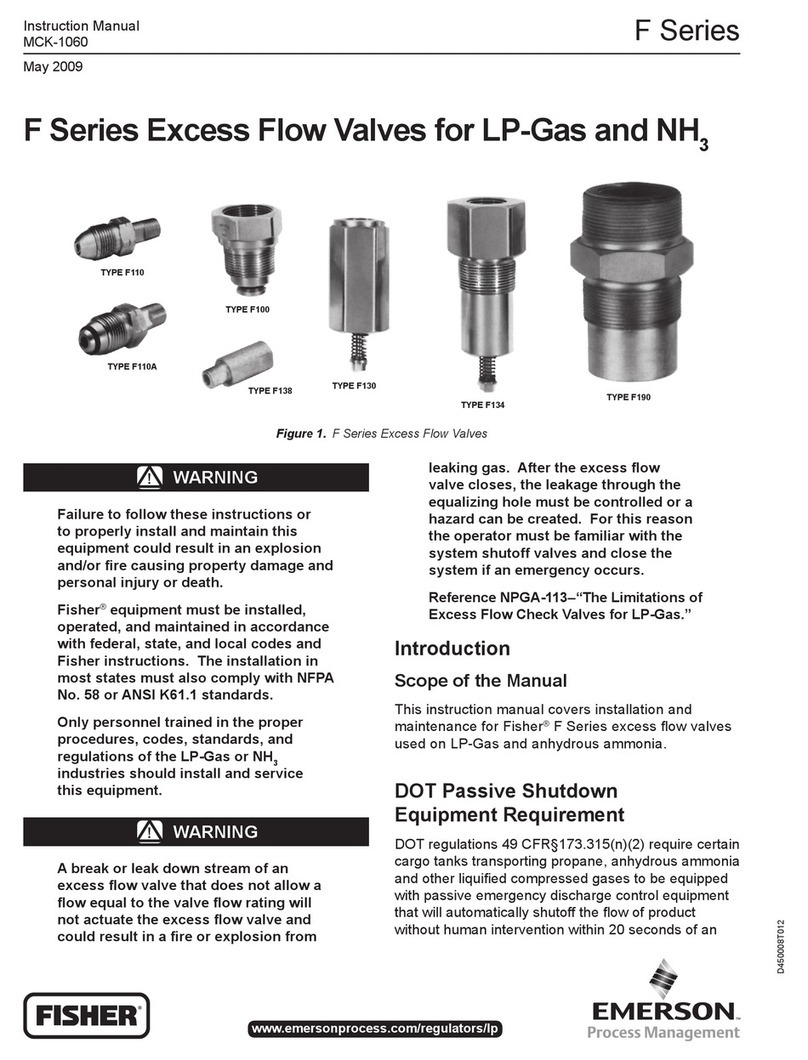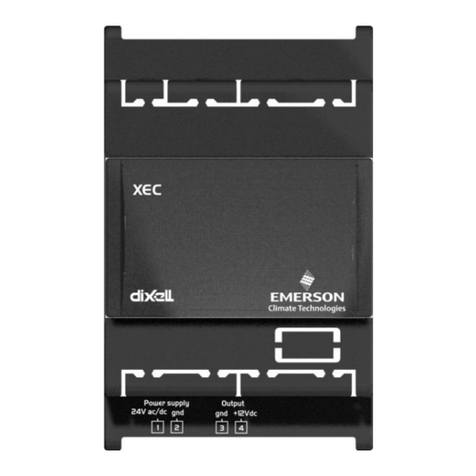
Installation*
!
WARNING
Personal injury, equipment damage or
leakage due to escaping gas or bursting
of pressure-containing parts may result
if the slam-shut valve is installed where
its capabilities can be exceeded or where
conditions exceed any ratings of the adjacent
piping or piping connections. To avoid this,
install the slam-shut valve where service
conditions are within unit capabilities and
applicable codes, regulations or standards.
Additionally, physical damage to the
slam-shut valve could break the mechanism
box off the main valve, causing personal
injury and property damage due to escaping
gas. To avoid such injury or damage, install
the unit in a safe location.
Installation, operation and maintenance
procedures performed by unqualified
personnel may result in improper adjustment
and unsafe operation. Either condition may
result in equipment damage or personal
injury. Use qualified personnel when
installing, operating and maintaining the unit.
Clean out all pipelines before installation and check to be
sure the valve has not been damaged or collected foreign
material during shipment. Use suitable line gaskets and
good bolting practices with a flanged body. The Type OSE
must be installed in a horizontal position with the mechanism
box above the body (see Figure 2). The Types 627-OSX,
EZH-OSX, EZL-OSX and EZR-OSX are installed with
the mechanism box typically below the pipe. Type OS2
slam-shut device can also be installed in a pit that is subject
to flooding by venting the mechanism box above the
maximum possible flood level. When used below ground,
the vent must be relocated (piped) to keep the mechanism
box from collecting moisture and/or other foreign material.
Install obstruction-free tubing or piping into the 1/4 NPT vent
tapping. Provide protection on the relocated vent by installing
a screened vent cap into the end of the vent pipe.
Type OS2 can be used along with a token relief valve to
minimize unnecessary shutoff. The relief valve is set to
open before the Type OS2 slam-shut device activates.
This arrangement allows the relief valve to handle minor
overpressure problems such as gas thermal expansion or
seat leakage due to dirt moving through the system which
may move out of the regulator during the next operating
cycle. The slam-shut device does activate if the regulator
has a major malfunction with excessive gas flow that
exceeds the token relief capacity.
The manometric device requires an external sensing line
which should be tapped into a straight run of pipe 8 to
10 pipe diameters downstream or upstream of the slam-shut
device. If impossible to comply with this recommendation
due to the pipe arrangement, it may be better to position
the sensing line tap nearer the regulator or slam-shut outlet
rather than downstream of a block valve. Do not position
the tap near any elbow, swage or nipple which might cause
turbulence. It is recommended to install an isolation valve
and a vent valve on the sensing line, which can be useful for
tripping and verifications.
*For further instructions on Types 627, EZR, EZH and EZL, refer to the corresponding instruction manual of these products.
SPRING RANGE SPRING
COLOR
SPRING PART
NUMBER
MANOMETRIC
SENSING
DEVICE TYPE
MANOMETRIC
SENSING
DEVICE STYLE
MAXIMUM
SENSING INLET
PRESSURE,
psig / bar
RECOMMENDED
SETPOINT
DEADBAND,
psig / bar(1)
MAXIMUM DIFFERENCE
BETWEEN
OVERPRESSURE AND
UNDERPRESSURE,
psig / bar(2)
4.0 to 14 in. w.c. / 10 to 35 mbar Purple FA113195X12
162
Diaphragm
74 / 5.1
1.6 in. w.c. / 4 mbar 4.0 in. w.c. / 10 mbar
10 to 33 in. w.c. / 25 to 83 mbar Orange FA113196X12 2.0 in. w.c. / 5 mbar 10 in. w.c. / 25 mbar
18 in. w.c. to 2.0 psig / 45 mbar to 0.14 bar Red FA113197X12 4.0 in. w.c. / 10 mbar 20 in. w.c. / 50 mbar
1.0 to 3.5 psig / 70 mbar to 0.24 bar Yellow FA113198X12 5.6 in. w.c. / 14 mbar 24 in. w.c. / 60 mbar
1.7 to 5.6 psig / 0.12 to 0.39 bar Green FA113199X12 7.2 in. w.c. / 18 mbar 2.2 / 0.15
2 to 11 psig / 0.14 to 0.76 bar Gray FA113201X12 20 in. w.c. / 50 mbar 5.1 / 0.35
4 to 19 psig / 0.28 to 1.3 bar Brown FA113202X12 1.16 / 80 mbar 8.7 / 0.60
7 to 33 psig / 0.48 to 2.3 bar Black FA114139X12 2.47 / 0.17 16.0 / 1.1
15 to 75 psig / 1.0 to 5.2 bar Blue FA113200X12
71 235 / 16.2
5.08 / 0.35 36.3 / 2.5
31 to 161 psig / 2.1 to 11.1 bar Brown FA113202X12 10.2 / 0.70 79.8 / 5.5
59 to 235 psig / 4.1 to 16.2 bar Black FA114139X12 23.2 / 1.6 145 / 10.0
235 to 323 psig / 16.2 to 22.3 bar Brown FA113202X12 27
Piston
1470 / 101 43.5 / 3.0
Requires use
of Type BMS1
or BMS2
323 to 588 psig / 22.3 to 40.5 bar Black FA114139X12 94.3 / 6.5
588 to 808 psig / 40.5 to 55.7 bar Brown FA113202X12 17 1470 / 101 102 / 7.0
808 to 1470 psig / 55.7 to 101 bar Black FA114139X12 174 / 12.0
81 to 323 psig / 5.60 to 22.3 bar Brown FA113202X12 236 Bellows 514 / 35.4 14.5 / 1.00 145 / 10.0
122 to 514 psig / 8.41 to 35.4 bar Black FA114139X12 36.3 / 2.5 290 / 20.0
257 to 1058 psig / 17.7 to 73.0 bar Gray FA113201X12 315 1058 / 73.0 72.5 / 5.0 479 / 33.0
1. Minimum suggested difference between slam-shut set pressure and normal operating pressure of the system.
2. Maximum difference between overpressure and underpressure when using one manometric device (Type BMS1) with tripping hook (see Figure 5). For underpressure and overpressure
points greater than this maximum number, use a second manometric device (Type BMS2) for underpressure protection.
Table 2. Spring Ranges, Part Numbers and Maximum and Minimum Pressures for the Manometric Sensing Devices (Types BMS1 and BMS2)
5
Type OS2
North America Only

